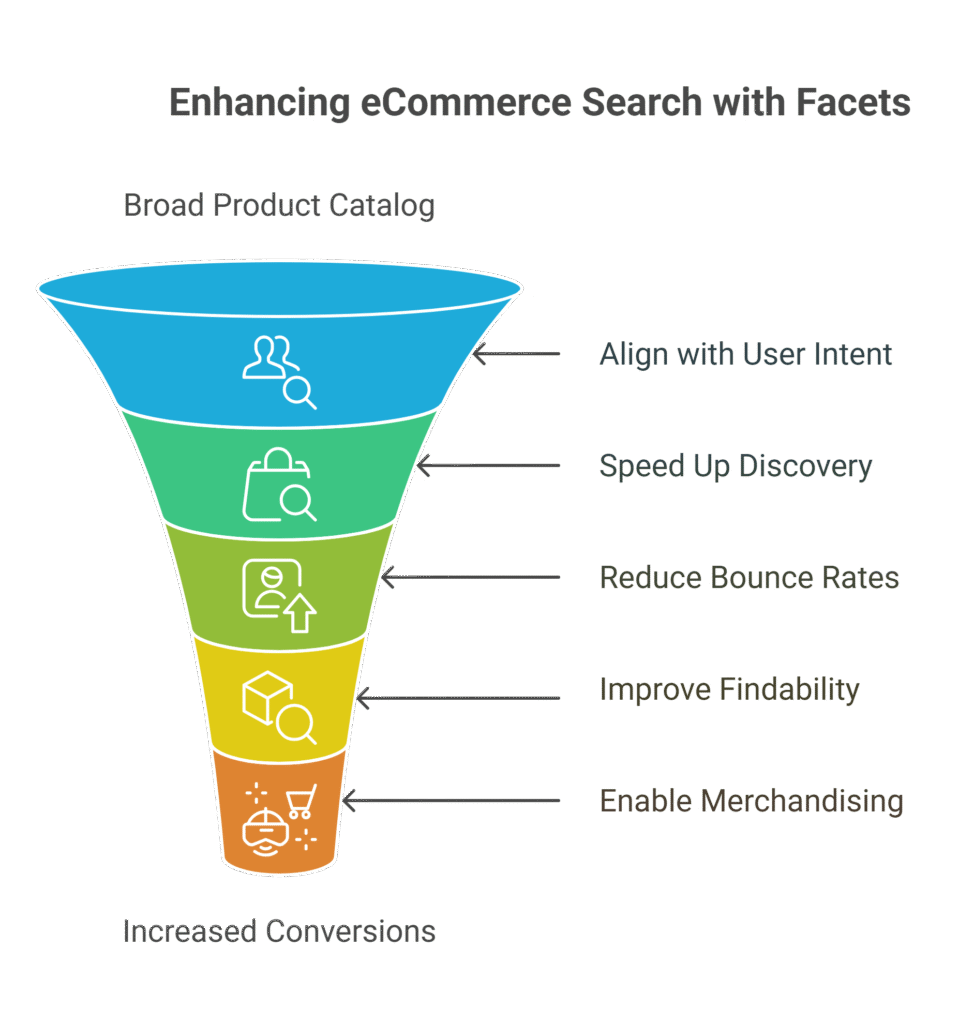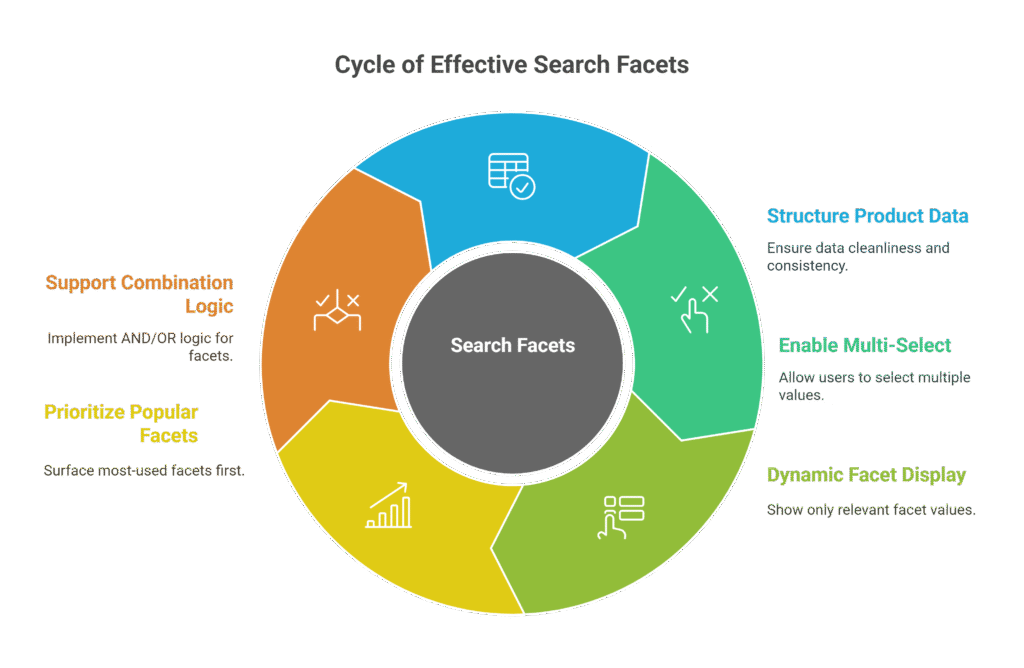Introduction: Why Filters Alone Aren’t Enough
Have you ever shopped online and filtered results by brand, price, or size? That intuitive experience is powered not by traditional filters, but by search facets, the silent drivers of eCommerce discoverability.
When a shopper wants to narrow their search from “running shoes” to “size 10, black, Nike,” facets make that seamless. But what is a search facet, really?
Let’s break it down in plain terms, explore how it works in eCommerce, and explain why platforms like Expertrec use facets to supercharge product findability and conversions.
What Is a Search Facet?
A search facet is a dynamic filtering option presented to users based on the attributes of available products. Facets allow shoppers to refine search results using multiple dimensions (facets) such as:
- Brand
- Color
- Size
- Price range
- Ratings
- Availability
- Material
Unlike basic filters that are often static and predefined, facets are:
- Context-aware (they adjust based on the search query)
- Multi-selectable (users can choose multiple values per facet)
- Hierarchical or flat (for categories and subcategories)
How Search Facets Improve eCommerce Search

1. Boost Relevance
Facets align results with user intent by narrowing massive catalogs to precise matches.
2. Speed Up Product Discovery
Instead of scrolling endlessly, shoppers can drill down instantly.
3. Reduce Bounce Rates
Better UX = fewer frustrated users = longer sessions = more conversions.
4. Improve Findability for Long-Tail Queries
Facets enable users to build their own detailed search, uncovering deep-catalog products.
5. Enable Smarter Merchandising
Retailers can boost or hide certain facet values based on stock, seasonality, or promotions.
Examples of Search Facets in Action
Fashion eCommerce:
Search: “Dresses”
Facets: Size, color, price, material, length, occasion
Electronics Store:
Search: “Smartphones”
Facets: Brand, screen size, RAM, storage, operating system, features (5G, waterproof)
Furniture Website:
Search: “Sofas”
Facets: Fabric type, color, dimensions, number of seats, style
How to Implement Effective Search Facets

1. Use Structured Product Data
Facets are only as good as your product attributes. Ensure data cleanliness and consistency.
2. Enable Multi-Select Filters
Allow users to choose multiple values (e.g., red + blue shoes).
3. Faceted Search Should Be Dynamic
Only show facet values relevant to current results to prevent dead ends.
4. Prioritize Most-Used Facets
Use analytics to surface popular facets first. Don’t bury crucial filters like size or brand.
5. Support Facet Combination Logic
Smart engines allow both AND/OR logic (e.g., “Nike OR Adidas” AND “Black”).
Facets vs Filters: What’s the Difference?
| Feature | Filters | Search Facets |
|---|---|---|
| Static or dynamic | Mostly static | Dynamic and query-driven |
| Multi-selection | Sometimes | Always supported |
| Real-time update | Rare | Expected |
| Context-aware | No | Yes |
| UX performance | Basic | Rich, layered, user-driven |
Expertrec: Smart Faceted Search Out-of-the-Box
Expertrec brings best-in-class search facet functionality to your online store with:
- Lightning-fast faceted search
- Auto-generated facets based on product data
- AI-optimized relevance + facet prioritization
- Facet analytics to track engagement and usage
- Zero-coding setup for Shopify, WooCommerce, Magento, and more
Whether you have 500 products or 50,000, Expertrec ensures your users always find the right product at the right time.
Conclusion: Facets Are the Future of Search UX
Without facets, your search is flat. With facets, your shoppers become empowered explorers.
A well-structured search facet system turns casual browsing into confident buying.
And with Expertrec, implementing intelligent, conversion-boosting search facets is as easy as flipping a switch.
FAQs
1. What is a search facet in eCommerce?
It’s a dynamic filter that lets users narrow down results by attributes like brand, size, color, etc.
2. How are search facets different from filters?
Facets are dynamic, context-aware, multi-selectable, and real-time; filters are more static.
3. Why are search facets important?
They make large catalogs navigable and help users find exactly what they want, faster.
4. Does Expertrec offer search facets out of the box?
Yes—Expertrec auto-generates, ranks, and updates facets using AI.
5. Can I customize facets in Expertrec?
Absolutely. You can choose which facets to show, prioritize them, and style them to match your brand.




